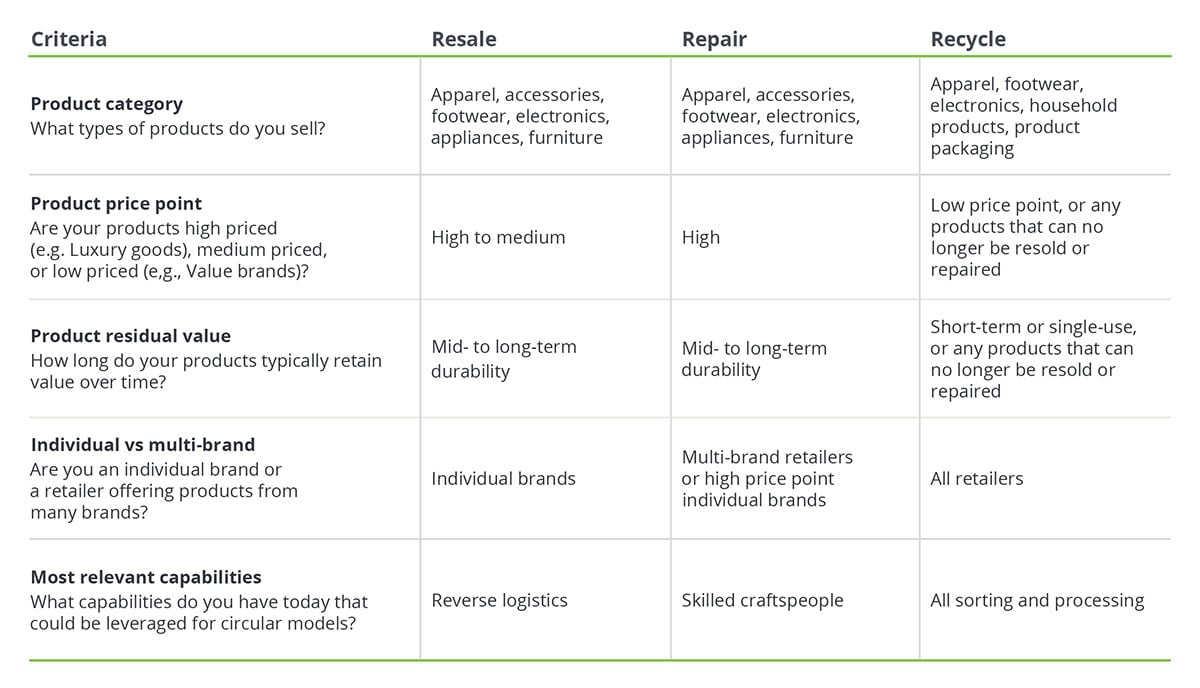Navigating the retail circular economy has been saved

Analysis
Navigating the retail circular economy
An action guide for retailers
While only a small percentage of material inputs into the economy are recycled at the end of their use, the landscape is shifting. How can retailers leverage their influence to advance the circular economy? Explore strategies to embed circularity into your business models in this action guide, created with the NRF.
Preparing for a changing retail landscape
Today, only 7.2% of all material inputs into the global economy are cycled back after the end of their useful life. However, the landscape is changing. Customer preferences are shifting toward resell and reuse of products, especially among millennials and Gen Z.
And we’re seeing an increase in regulations around circularity, particularly in Europe, which is pushing organizations to act.
Retailers that prepare for the changing landscape—and leverage their control and influence to advance circularity—should be better prepared to capture long-term business value.
The conversation has shifted from why to how.
Created by Deloitte and the National Retail Federation (NRF), our Circularity Action Guide focuses on helping retailers prioritize best-fit circular business models, articulate the value, and mobilize internally to get started.
Capturing value throughout a longer life cycle
For decades, the traditional retail model has focused on a linear product life cycle, which concludes with a singular end customer. But today, customers have options at the end of this product life cycle, with many of these options extending the life of the product. This presents a business opportunity for retailers to help customers make these choices and capture value throughout a longer life cycle.
In practice, how companies choose to engage in the retail circular economy will differ and will be tailored depending on the kinds of products, customer demand, local infrastructure, and the retailer’s strategic priorities. Retailers can offer multiple models at once, focus on one, or mix and match.
Exploring new business models
As a retailer, the first step in embedding circularity is evaluating which business model—or models—is the best fit for your organization.

When considering which approach to take, retailers should also consider:
Financing: When developing circular business models and building capabilities to support them, it’s likely that investments will be required and may not be profitable to start. Companies may need to adapt their traditional financial models or controls to enable a “try and fail” mindset.
Accounting implications: A critical step involves deciding how to manage financial accounting of products taken back for customers with the intent to resell or reuse. With circular models, aligning on who has what products on their books at what times will look different than traditional accounting and requires coordination across business functions. This circular accounting should consider total costs of ownership of a product, including the margins from original sale through takeback of the product, mitigated EPR risks, and other metrics.
Potential brand impacts: If your brand or products retain value, it’s very likely some downstream customers will sell secondhand. Companies that operate resell or reuse programs themselves control the quality and customer experience of their products throughout the life cycle. Unlocking the repeat customer journey and how to incentivize customers to come back can represent a competitive advantage.
Download the full guide to learn more about resale, repair, and recycle models—and which one might be best for your company.


